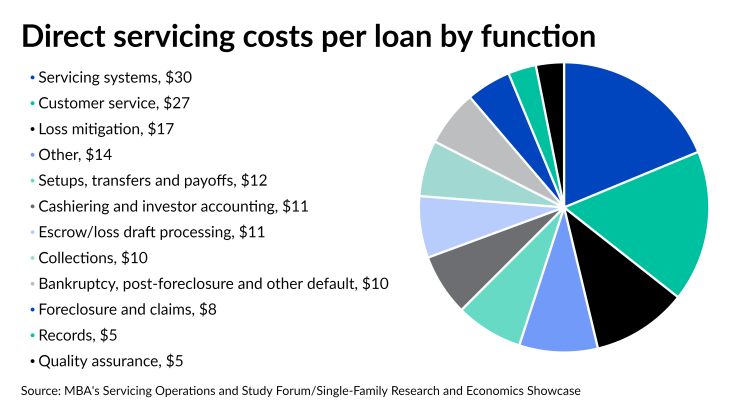While the potential benefits from
Foreclosure bans and payment suspensions put in place amid the pandemic were quickly tracked by several federal policymakers for

Because further tweaks in policy are anticipated at the time of this writing, some mortgage executives said they were doing regular short-term assessments to recalibrate their servicing-related business planning. Others were considering asset sales or finding qualified experts to help.
“Borrowers need help getting into their longer-term solutions for pandemic distress. I think that will take a combination of in-house talent and outside resources,” said Jennifer Keys, senior vice president for compliance solutions at Covius.
Modifications may boom, foreclosures could see a slow start
Many servicing policy changes have been set for the second half, including the federal foreclosure ban’s end July 31, related consumer protection rules starting at the end of August, and
Those changes have been less onerous than some in the industry had feared, with the Consumer Financial Protection Bureau forgoing an earlier plan for a longer foreclosure moratorium, and housing agencies streamlining loan modification options offered.
Servicers have been optimistic but are still trying to get their arms around how the policies would work in practice.
“There’s a lot of comfort in the servicing community because of [the shorter foreclosure moratorium and policy alignment], but this hasn’t been operationalized yet,” said Michael Bright, CEO of the Structured Finance Association, a group whose constituency includes mortgage companies.
Because housing finance firms hadn’t yet seen how those changes would play out in practice, they were cautious about budgeting for them. As a result, some servicers were preparing for all the uncertainty around policy and workloads in the second half by shoring up their financial resources for contingencies.
“Everyone in this space, I think, is taking a very cautious approach...in case you’ve got to pivot to handle a surge in work,” said Allen Price, a senior vice president at BSI Financial Services.
Price expected demand for subservicing that his company provides would be strong in the second half because many housing finance firms want help with the policy changes ahead. However, he anticipated a potential slowdown in the mortgage servicing rights investment the company does. Fewer bulk MSRs were trading at the time and that was expected to continue in the months to come, so long as upward pressure on interest rates remained.
Some component servicing specialists working with foreclosure-related outcomes were more comfortable they had a sense of surges in workload could be like. That’s because new policies require additional borrower contact steps to be taken before foreclosures can be started, and the process already is a particularly long one. Also
“I think that's going to take six months-plus before you would even get to the point where new filings are starting to be worked on. So it's going to be a manageable process,” said Richard Kruse, principal at distressed asset manager Gryphon USA.
Selling loans in forbearance may be an option
Mortgage companies that aren’t distressed asset specialists may have a different view on whether taking new servicing work in the second half is manageable.
Some of these companies may sell off their loans in forbearance to investors who have more resources to handle the compliance, so long as the trade remains attractive. Sellers remain responsible for certain representations and some compliance related to those mortgages, but may be able to reduce their risk and workload.
“If somebody else can handle those loans better, let them,” said Jeff Bode, owner, president and CEO of MidAmerica Mortgage, a seller in this market.
The reperformance rates on loans in forbearance has been encouraging, so they have been attractive to investors like
“With employment, salaries and rates increasing, and housing prices staying strong, I think these loans will continue to re-perform or pay-off,” said Sadie Gurley, vice president at Maxwell Capital, of mortgages in forbearance.
So long as the Federal Reserve doesn’t make a move to
“The market will remain active for the foreseeable future,” she said in early July.
As compliance needs grow, so too may regtech use
Servicers have a reputation for being slower to invest in technology than lenders but the breakdown of their latest direct-loan costs show systems have been their biggest priority recently, likely in part to implement a host of evolving policy changes related to the pandemic.
Nearly 19% of direct servicing costs, or $30 of $160 spent on the typical loan go to systems, and that’s the largest subcategory of expense involved, according to statistics the Mortgage Bankers Association shared at a recent virtual event organized by its research division.
“Servicers want to get out of the rules business, and many...actually have built their own workout...engines. Now they're getting to the point where that investment is so huge that they're looking to technology partners,” said Jane Mason, CEO of industry vendor Clarifire.
Technology could make that process more manageable but it still could be “a very rough six months” given all the policy changes coming, she said.





